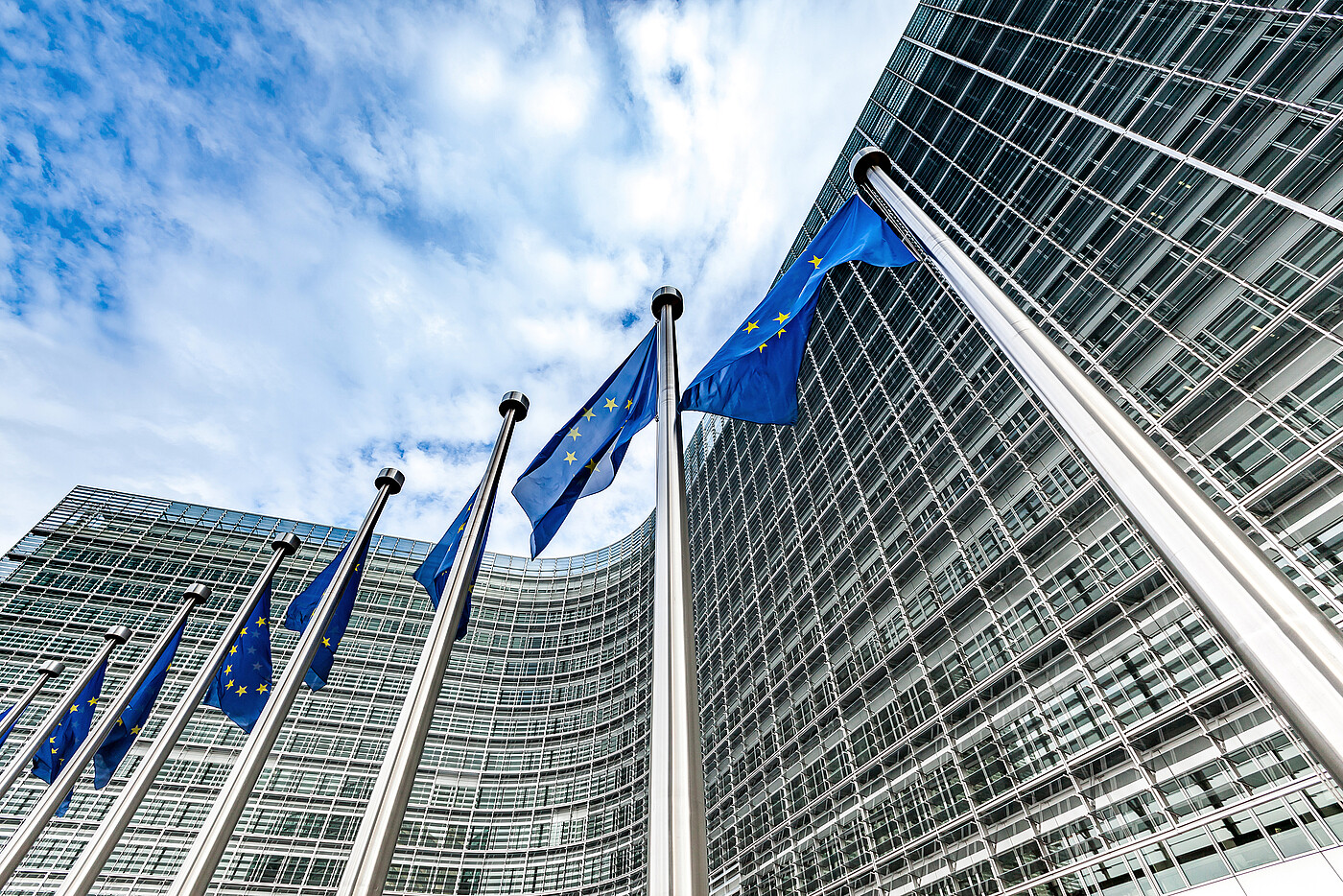Companies worldwide are facing significant adjustments and restructuring of their business models to meet the growing climate challenges. Capital markets play an important role in setting the pace here, along with governments and society.
As an exemplification of just how large the pressure from the capital sector has become, take this recent instance from January 2022: around 70 large capital investors, insurers and pension funds joined forces as the “Net-Zero Insurance Alliance”, a coalition including Allianz, Munich Re, Zurich and Swiss Re, among others. The Alliance members, who manage 10.4 billion USD in total, are united by the goal of holding companies and governments accountable with objective commitments to climate protection. It calls for up to 65 percent reduction in CO2 emissions by 2030.
A simulation by the German Federal Bank (Bundesbank Monthly Report, 24 January 2022) highlights how severely the challenges of climate protection affect listed companies in particular. 5,300 companies in 75 countries were studied. Among these companies, 81 % would face a loss in market value of not more than 4 % due to the burden of emissions. However, 7 % of the companies – which amounts to no less than 350 companies in total – could expect losses of more than half of the company’s value.
These environmental policy-related challenges add up to a completely transformed raw material cycle, which currently threatens to have a long-term impact on the energy-intensive primary industry sector in particular. Natural gas prices have increased fivefold over the year, the oil price has doubled and the European CO2 price has risen fourfold. European governments are no longer able to keep their promise of reimbursements to corporate or private consumers to compensate for a rise in the (politically induced) energy prices.
The causes behind the price developments on the energy markets include geopolitical crises, the hesitant regeneration of the global economy after the coronavirus pandemic and stricter European climate protection regulations, as well as the accelerated withdrawal from nuclear energy and coal. Since 2014, investments in the discovery of new oil deposits have decreased 50 % worldwide. This is politically intended, in order to meet the climate protection targets of the Paris Agreement. To reach climate neutrality by 2045, the annual climate protection target would have to be tripled in Germany alone.
The role of the courts
Courts are now also under increasing social and political pressure. A judgement by the District Court of The Hague in May 2021 could be an indication of what is to come: the Dutch court ordered the Royal Dutch Shell oil company to cut global emissions by net 45 % by 2030. The company, which announced it would lodge an appeal, was not only ordered to reduce its own emissions, but also to account for the emissions of its customers as a result of using its products.
Implications for companies
For companies, this represents a serious upheaval. So far, most companies have addressed their own emissions (Scope 1 and 2). A comprehensive obligation to factor in emissions on the customer’s side as well (Scope 3) would have momentous consequences for corporate environmental management systems. As a further consequence, companies will be increasingly held solely legally accountable for the greenhouse gas effect. This does not correspond to the ideal of consumer sovereignty, but more importantly, it presents companies with an additional risk in terms of potential claims for damages in the rapidly growing area of climate litigation.
The extent to which the courts and politicians place companies under pressure is clearly demonstrated by the decision of the Federal Constitutional Court to tighten the Climate Protection Act in March 2021. The EU presented further extensive guidelines in July 2021 (The “Fit for 55” package). Clearly, in addition to control by means of the price – as in emissions trading – legislators are tackling the regulation of specific sectors in increasing depth.
On 31 December 2021 a delegated act was adopted as an extension of the green “taxonomy”. With this taxonomy, the EU has created a framework for private investors to contribute to the achievement of climate neutrality. According to OECD estimates, global investments of 630 billion USD per year would be needed to meet the climate protection targets of the Paris Agreement (OECD 2017: Investing in Climate, Investing in Growth, OECD Publishing, Paris )– amounts that are unlikely to be covered entirely by the public coffers. The taxonomy is meant to provide private investors with guidance for their investments and make it easier for them to distinguish between “green” assets and “brown” assets, i.e. activities that are harmful to the climate.
Divided opinions in society
The taxonomy is well-meaning, and yet the supplemental provision on the issues of natural gas and nuclear energy, which has recently become public, has once again highlighted the potential for social conflict that comes with the energy transition.
30 % of the German population surveyed in an opinion poll by IPSOS favoured a complete rejection of the entire set of taxonomy proposals, while 25 % were on the supporting side, at least for natural gas. Whereas nuclear energy doesn’t stand a chance any more in most countries, precisely because of the cost, in Germany the discussion on natural gas shows how difficult it is going to be to balance the demands from environmental policy and energy policy with measures to ensure security of supply when facing an accelerated coal phaseout. It will take years for renewable energies and storage solutions to be completely substitutable for conventional energies in the process of electricity generation. Also, the infrastructure for hydrogen that is needed to decarbonise the industry and create the required storage systems, is still in its infancy.
What needs to be done?
Companies are affected by environment and climate protection measures in a number of ways: they must convince their own customers of their sustainable competitiveness, remain attractive as an employer on a competitive market for talent and, at the same time, juggle conflicting demands from society with economic opportunities. The situation is becoming more and more complex due to the shifting nature of communications. Any organisation that has faced public condemnation for alleged environmental offences understands the potential for scandalisation in social media.
As a consequence, what companies need, in addition to any necessary restructuring towards more climate-friendly processes, is a clearly defined strategy for dealing with expectations from stakeholders in the market, employees, society and governments, while demonstrating their own contributions in a credible way. What is needed is a transparent, annually verifiable action plan that goes way beyond any previous declarations of intent that companies may have been accustomed to in their environmental reporting to date. The pressure for such measures – from the capital markets, governments and society, and increasingly also from the courts – has become much too strong. To put the objective of “Winning Green” into action, congruent communications – that unite different disciplines and stakeholder interests – are needed to ensure corporate success in the long term. The example of the taxonomy clearly shows the difficulties confronting companies today with regard to the issues of ESG and climate protection. After all, the taxonomy was meant to put an end to the debate about what is green. Now, it threatens to open up old wounds again.
This article – written by Volker Heck – was featured in the German online journal RestructuringBusiness in March 2022 and appears on our website with the kind permission of the publisher. Download pdf (in German).
Photo: iStock.com/35007

 LinkedIn
LinkedIn
 Twitter / X
Twitter / X

